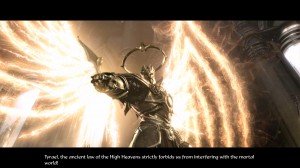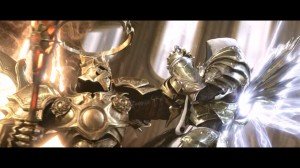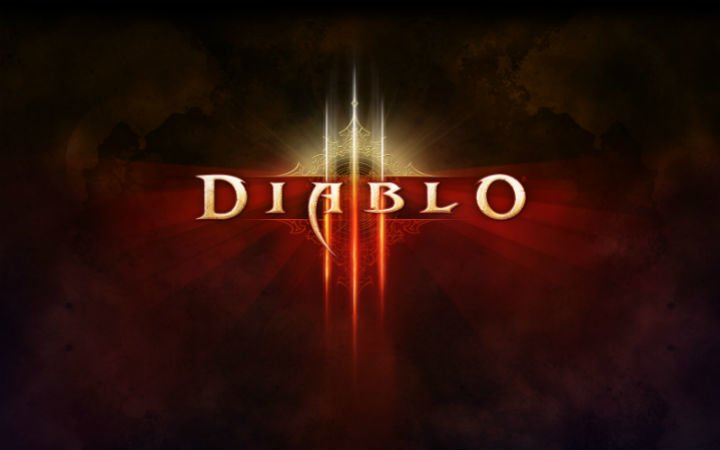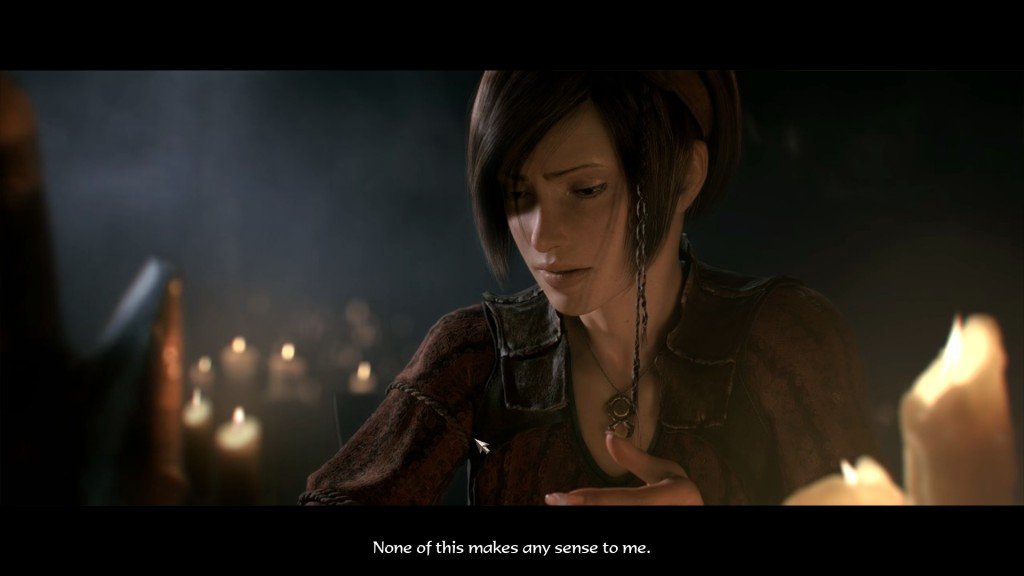So how did the writing staff working for one of the most successful developers in history, on one of the most anticipated games in history manage to take a simple, timeless theme and blow it? Stay awhile, and listen.
Just over a year ago, Blizzard opened a portal to Hell and unleashed Diablo III upon an expectant but unprepared world, and despite its massive financial success, its most lasting legacy is a single error which brought the humble number 37 into the service of Diablo, Lord of Terror. Or maybe the Lord of Hatred would be better suited to Error 37. Or the Maiden of Anguish? It doesn’t really seem to matter, for the characters behind Diablo III are as forgettable as the game’s fabled connectivity issues. But now, over a year since its release, like an Act III miniboss giving way before the final battle, the Lord of Terror has met his match in the realm of urban planning, with Simcity taking rotten connections to the next level.
With its most famous legacy usurped, now may be a good time to assess Diablo III on a different criterion. I am not an expert on Action RPGs, and I’ve only played a few hours of Diablo II, so I don’t feel qualified to ruminate on the loot distribution and auction house. What I can talk about is the story and characters. Any RPG, even one where the conflict is literally as simple as ‘good versus evil,’ requires an engaging story and characters to be truly successful. Believable motives, interesting dialogue, and memorable villains are the hallmarks of a successful RPG. Of course, it’s nice to have these components in any game, but in a genre that boasts game features like Alpha Protocol‘s dynamic dialogue system or Mass Effect‘s famous characters, any RPG worth its salt needs to put in a strong showing.
This is where Diablo III disappoints the most. Sure, the loot is uninspired and the auction house is a painfully naked attempt for Blizzard to wring yet more profit out of a game that has already sold over twelve  million copies, but what really hurts is that such a phenomenally successful game could have such mediocre writing. Players starting up this hugely-anticipated chapter in the series expected either a bare but serviceable story, like in the previous installments, or a dynamic world with genuinely fascinating characters. What they got was a mess with a lot of characters, lore, and words, but nothing that was fresh or sensible.
million copies, but what really hurts is that such a phenomenally successful game could have such mediocre writing. Players starting up this hugely-anticipated chapter in the series expected either a bare but serviceable story, like in the previous installments, or a dynamic world with genuinely fascinating characters. What they got was a mess with a lot of characters, lore, and words, but nothing that was fresh or sensible.
Diablo III‘s primary failing is that like a frenzied hellhound, it bites off more than it can chew or even contain between its disgusting, slavering lips. All of the other issues: the reams of trite, expository dialogue, the endlessly weaving plot which somehow manages to be both obvious and obtuse, and the criminally mismanaged characters are all symptoms of this error. Blizzard does some things very well: production, cinematics, strategy, a robust online matchmaking system, etc. But it’s apparent that their writing staff was hopelessly outclassed by this behemoth. What makes this so depressing is that the basic theme of the Diablo series, good versus evil, is clearly extant here. The player doesn’t need to ask themselves why they are fighting a demon, it’s because it’s a goddamn demon and should be destroyed. As I see it, there are three ways to handle Diablo III‘s basic heaven vs. hell story. I could write an individual article on each of these approaches and how Blizzard screwed them up, but I will try to keep it brief.
 1. Make it exciting. With the basics laid out, add the spice that makes a story distinct. A game can easily be made spicier by making the villains intriguing and threatening. How much would Portal lose without GLaDOS, or Dragon Age: Origins without Loghain (spoiler alert for people who have been in comas since 2006)? Unfortunately, as countless gamers have already noted, the so called ‘Lords of Hell’ against whom the player battles are woefully inept and boring. The Lord of Lies only lies once in the entire game (and it’s not even a good one), and there is absolutely nothing conniving, sneaky, or deceptive about him or the act in which his story is set. Azmodan is even more punishing to the Blizzard writers, who must have groaned when they realized the only Hell Lord available to fit the mold of “master commander” is the Lord of ‘Sin’, a label which is about as unclear as it is irrelevant to the gameplay. Much has been made of Azmodan’s Saturday morning cartoon-villainy, and I am hardly the first to note that you don’t have to be Sun Tzu to know that you shouldn’t announce every step of your battle plan to your enemy.
1. Make it exciting. With the basics laid out, add the spice that makes a story distinct. A game can easily be made spicier by making the villains intriguing and threatening. How much would Portal lose without GLaDOS, or Dragon Age: Origins without Loghain (spoiler alert for people who have been in comas since 2006)? Unfortunately, as countless gamers have already noted, the so called ‘Lords of Hell’ against whom the player battles are woefully inept and boring. The Lord of Lies only lies once in the entire game (and it’s not even a good one), and there is absolutely nothing conniving, sneaky, or deceptive about him or the act in which his story is set. Azmodan is even more punishing to the Blizzard writers, who must have groaned when they realized the only Hell Lord available to fit the mold of “master commander” is the Lord of ‘Sin’, a label which is about as unclear as it is irrelevant to the gameplay. Much has been made of Azmodan’s Saturday morning cartoon-villainy, and I am hardly the first to note that you don’t have to be Sun Tzu to know that you shouldn’t announce every step of your battle plan to your enemy.
Finally, Diablo, Lord of Terror, is in no way terrifying, nor does he make any attempt to use terror as a weapon. The closest he comes to living up to his namesake is when he transports the player into the ‘realm of terror,’ which gives the impression that the things Blizzard employees find most terrifying are black wispy smoke and clunky dialogue (“Only by defeating us can you return to your own realm! But none have ever crawled from the depths of their own terror!!”) Ultimately, the significant enemies in the game betray a total lack of creativity, as the Lords of Sin, Lies, and Terror all have fundamentally identical battle styles, which involve summoning minions, hitting you really hard, and making big deadly circles that you have to run away from.
Don’t even get me started on the other bosses. By my count, eight of the thirteen main bosses are little more than glorified keys, with no particular relevance to the plot or character. Figures like the Maiden of Lust,  Izual, and even the Skeleton King, who have traits or back-stories that could make them interesting, are reduced to obstacles you need to destroy just so you can get to the room behind them.
Izual, and even the Skeleton King, who have traits or back-stories that could make them interesting, are reduced to obstacles you need to destroy just so you can get to the room behind them.
2. Emphasize the human element. We are humans, after all, and even the most familiar story can stay fresh and engaging if there are hallmarks of real humanity; emotional arcs, character development, and believable relationships are the spice that make a bland ‘good vs evil’ meatloaf into a memorable meal. So now I’ll pose a question to you. Who was your favorite character in Diablo III? What did you like about him or her?
Take your time.
I won’t be snide and tell you there are no good characters in Diablo III. There are exactly three: the companions. Of course, they have negligible impact on the story and little connection to anyone else. Nevertheless, their back-stories and writing are considerably more interesting than anything else happening throughout the game, which, of course, is why you get to have exactly no gameplay time devoted to resolving their conflicts.
So who is the story about? It’s not about Diablo (III); he doesn’t appear until the last 40 minutes of the game. It’s not about the player, who doesn’t actually do anything to further the plot that doesn’t involve opening doors and killing things. It’s not Leah, who starts out as a promising character and then becomes less and less visible throughout the game until she is literally vaporized before her character can achieve any  sort of significance. That leaves the wholly unimpressive Tyrael, whose potentially interesting arc is discarded in favor of dispensing ‘sage’ advice.
sort of significance. That leaves the wholly unimpressive Tyrael, whose potentially interesting arc is discarded in favor of dispensing ‘sage’ advice.
3. Shake up the premise. To the standard mix of angels and demons, Blizzard adds the prospect of mixing and changing boundaries, as well as the position of humanity as a lynchpin. Tyreal is an angel who becomes a human, and the player is a nephalem, a sort of proto-human who is probably a human, but also may be something a bit more. Zoltun Kulle, another potentially interesting character who is tragically ruined, posits that it is humans who have the true power in Sanctuary, the power to eventually defeat both the factions of Heaven and Hell. What thematic spice Diablo III adds is related to the notion of humanity as a sort of fifth business in this bad/good conflict, one which causes consternation and delight for both sides. Imperius, the Aspect of Valor, is one of my favorite elements of the game because while he is an angel, he is also arrogant, stubborn, and foolish. Of course, there is no opportunity to engage with him in any interesting way. In the end, the player fights with heaven against hell and nothing changes, excepting that Tyrael, now a human, decides to remain on the angelic council, but to change his label from Justice to Wisdom, and I guess he can do that? Certainly no one tries to stop him, although it is unclear what the Heavens  will do now without justice. I suppose that’s not important though.
will do now without justice. I suppose that’s not important though.
Sloppiness and blandness are the hallmarks of Diablo III‘s story, and yet there is a bright side. When I am listening to a podcast or have an hour to kill, I might still play a bit of the game, because its visuals, sound design, and action are so addictive and satisfying. It’s just a shame the writing can’t match their standard.




